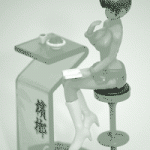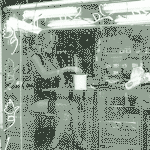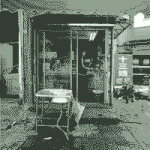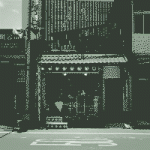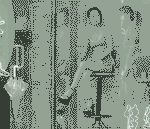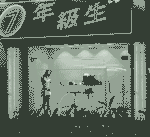Histories of Exploitation
Exile Islands, Then and Now
by DEANNA RAMSEY
Christmas Island sits 220 miles off the southern coast of Java, a tiny, isolated Australian territory in the Indian Ocean. Boven Digoel is a remote spot of jungle on the island of New Guinea in Indonesia’s Papua province, once accessible only by a days-long journey upriver.
Aside from being both tropical and secluded, these sites share something darker and more ignominious, for Boven Digoel was a penal colony established by the Dutch in 1926 for rebels and critics of the colonial government, and the way-station for asylum seekers known as Christmas Island is our modern-day equivalent, a place for the marginalized of the globe to live out lives in geopolitical limbo.
So many boats filled with people from the Middle East, South Asia and Africa were landing on Christmas Island in the last decade that the Australian government built a US$370 million detention center there in 2009. The site houses more than 2,000 people, and sits in one corner of the 12-mile-long island.
The increasing number of asylum seeker arrivals to Australia – more than 15,000 in 2013 alone – has become such an issue that in July former Prime Minister Kevin Rudd took a new “hardline” stance, saying that no one arriving by boat would ever be allowed to settle there. He announced that new arrivals would be moved to a center on Papua New Guinea’s Manus Island for processing and possible resettlement, while also granting the country a much-needed assistance package. In August, Rudd announced a similar agreement with the South Pacific island nation of Nauru.
Now, instead of Christmas Island’s isolation, those from conflict-torn countries seeking better lives are being sent to a 60-mile-long stretch in Papua New Guinea’s northern waters or to Nauru’s even more remote eight square miles, left to wait indefinitely for their refugee claims to be processed.
Considering the history of the region, these moves to expel people to ever more distant locations – and essentially dodging the reasons why so many are there in the first place – bleakly echo polices of detainment and exile practiced by colonial-era powers.
The use of Australia as a penal colony is an obvious example, and the British East India Company banished its colonized subjects to the Andaman Islands and Singapore. The French employed New Caledonia in the Pacific and the infamous Devil’s Island in Guiana in similar ways, to name just a few.
After a failed communist uprising in Jakarta (then Batavia) in 1926, the Dutch created Boven Digoel, a prison deep in New Guinea at the easternmost border of the Dutch East Indies. The site housed those espousing communist and revolutionary views, including Sutan Sjahrir, future prime minister of Indonesia, and Mohammed Hatta, who would become the country’s first vice president.
The region’s modern exiles, fleeing countries that are centers of contemporary conflict like Afghanistan, Myanmar and Iraq, must pay people smugglers to take them on the hazardous journey to Australian territory, but they often do not reach their destination.
The rickety wooden boats that smugglers employ routinely break down and sink, with asylum seekers drowning in the seas between Indonesia and Australian territory. In 2010, a boat dashed upon the rocks on Christmas Island’s shores and 50 people drowned. In September, a boat heading to the island sank off the coast of Java, with at least 28 killed. And in October, 30 asylum seekers from Pakistan, Somalia and Eritrea were discovered on an Indonesian beach intending to travel to Christmas Island. According to reports, after a dispute with the smugglers they had paid, they were abandoned and later taken into custody by police.
The journey to Boven Digoel in the 1920s and 30s was not as fraught with danger, with Sjahrir even writing eloquently of the beauty he experienced during his voyage from Jakarta. But life in the penal colony was bad, with prisoners dying of disease, eaten by crocodiles or weakening through their efforts to create new homes in hostile jungle. Mas Marco Kartodikromo, an accomplished writer and vocal critic of the colonial government, was sent to Boven Digoel in 1927; in 1932 he died there of malaria, as many inmates did.
In both the colonial prison camp and our modern-day detention centers there was anger, rebellion and attempts at escape. In Boven Digoel, so many refused to do the work required of them that a special site was created for those “recalcitrants” to live in even further exile. Escape attempts were unsuccessful as no one could navigate the jungle. Some were caught, others just disappeared, never to be heard from again.
In March 2011, the recalcitrants of Christmas Island rioted, some jumping the center’s fence and heading to the airport, others setting fire to buildings, including their own tent accommodations, and throwing rocks at police. And on July 19 of this year, a riot by the mostly Iranian detainees at the Nauru center, reportedly in frustration at the interminable waiting involved in the processing of their claims of refugee status, destroyed many of the site’s buildings.
A United Nations Refugee Agency (UNHCR) report from February 2013 on Manus’ center states, “the current policy and practice of detaining all asylum-seekers on a mandatory and indefinite basis, without an individual assessment or possibility for review, amounts to arbitrary detention which is inconsistent with the obligations of both Australia and PNG under international human rights law.” A December 2012 UNHCR found that Nauru’s center did not meet international standards and the conditions were “harsh, with little natural shelter from the heat during the day.” Images illustrate this, showing row upon row of tents exposed to the elements in Nauru and Manus and Christmas Island’s prison-like center wrapped in fencing and topped with barbed wire.
How strange it is that the inconspicuous Christmas Island has emerged as a destination, a space that connects Indonesia and Australia across sea – and now through the desperate people crossing their borders – and also entwines the shared colonial histories of the region. On a map, one can almost trace a straight line from Christmas Island, named by an East India Company voyager, to Boven Digoel and its echoes of the Dutch colonial past, to Manus, which was German colonial territory and later British, and on to the former German colony of Nauru.
Christmas, Manus and Nauru, with their histories of exploitation, now house modern colonies designed to imprison the innocent. The places are marked by the denial of rights, imperialist attitudes and little recourse – all on far-flung tropical islands populated by people who never intended or wanted to stay.
But one difference between then and now is that almost immediately after Boven Digoel was established, dispatches from the prison were published in newspapers throughout the Dutch East Indies, as historian Takashi Shiraishi has noted. The public could read Mas Marco’s description of the shackles he was kept in during his journey to the camp, or Sjahrir’s encounters with the locals of the New Guinea jungle or even a fictionalized account of life at Boven Digoel by the writer Kwee Tek Hoay serialized over three years in a weekly paper.
But what do we hear from our modern-day exiles, people who have fled war and terror and strife and risked their lives to make it to safer shores? Aside from news documenting political maneuverings or boat arrivals and, regrettably, capsizings, there is little from the detained themselves, especially ironic in our age of mass and social media. Those who are detained – the families even – have traveled far, far from their homes in hopes of a respite from conflict and have ended up in ironically named “centers”, with no voice and no recourse but the occasional riot.
Before arriving in Boven Digoel, Hatta somewhat optimistically wrote that he hoped the exile camp might become a “Mecca” for the progressive movement in Indonesia, a place where new leaders could emerge. And while he was certainly correct about himself, there were many others who never, ever left the place.
In December of 1938, the Dutch minister of the colonies wrote to the governor general on the closing of Boven Digoel, “That I am of opinion that the Netherlands authority over the Indies derives its great moral prestige in the world from its effective and humane administrative methods and [therefore I believe that] the sooner it can do without the exceptional means of a special place of internment, the better.”
We can only hope similar correspondence will be sent regarding the “immigration detention centers” marring our southern oceans, for those immigrants – the victims of humanitarian crises that spring from very global issues – deserve much, much better.

